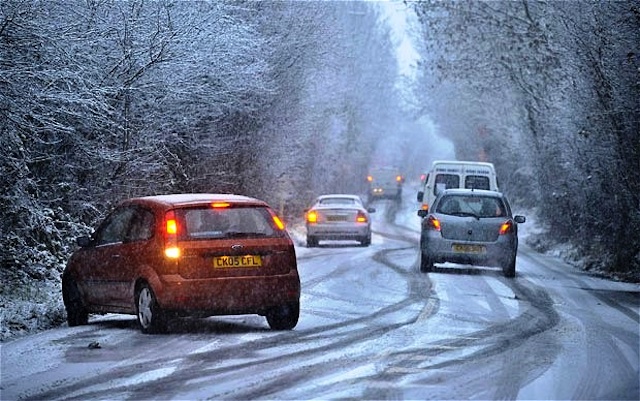
- Ensure your windows are clean and clear, and that you have all-round visibility before you set off. Also take the time to clear snow off the roof of your car.
- When driving in snow, get your speed right – not too fast that you risk losing control, but not so slow that you risk losing momentum when it is needed
- From stationary, start gently and avoid high revs. Stay in a higher gear to avoid skidding and maximise control. If it is very slippery, in a manual car move off in a higher gear, rather than just using first.
- If you get yourself into a skid, the main thing to remember is to take your foot off the pedals and steer. Only use the brake if you cannot steer out of trouble.
- Double or even triple your normal stopping distance from the vehicle in front so you are not relying on your brakes to be able to stop; it simply may not happen!
- It’s better to think ahead as you drive to keep moving, even if it is at walking pace.
- Bends are a particular problem in icy conditions – slow down before you get to the bend, so that by the time you turn the steering wheel you have already lost enough speed.
- On a downhill slope get your speed low before you start the descent, and do not let it build up – it is much easier to keep it low than to try and slow down once things get slippery.
And if the worst does happen:
- Keep track of where you are. If you do have to call for assistance, you need to be able to tell the breakdown or emergency services your location.
- If you must leave your vehicle to telephone for assistance, find a safe place to stand away from the traffic flow. If you have just lost control, the next driver could well do the same in the same place.
- If you break down or have to pull over on a motorway or dual carriageway, it is always better to leave your vehicle and stand a short distance behind and to the safe side of it. Don’t stand in front of it if at all possible. Balancing the risks of a collision and hypothermia is something that depends entirely on your situation.
